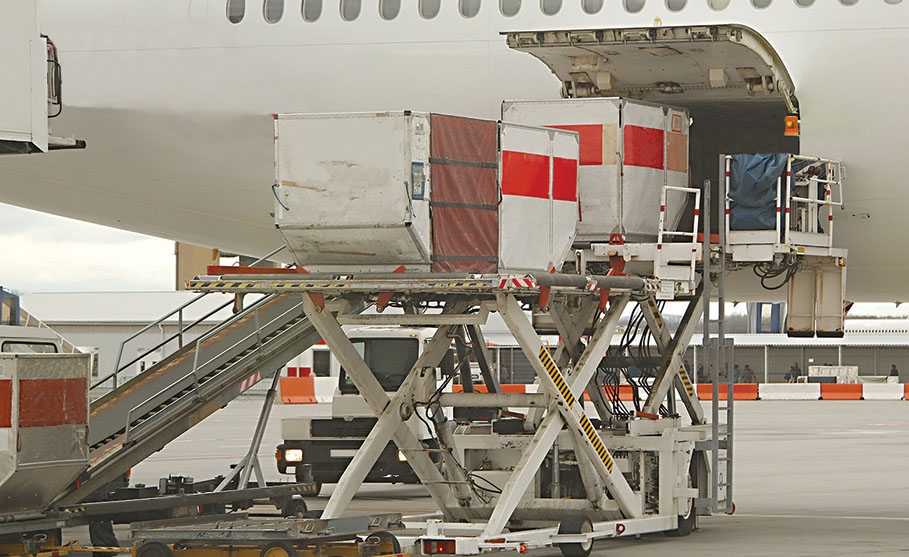Air Cargo Quarterly Transportation Market Update Q2 2019: Volumes “Stagnant” for now
Ongoing trade tensions, pricing volatility and slack demand have kept the air cargo market on hold for most of this year. However, industry analysts say that a new set of factors could reverse the trend by peak season.
As recently as last April, air cargo analysts were rather bullish with their forecasts, based largely on “consumer confidence” and demand. However, by mid-year, the winds of change have softened that sentiment. Indeed, annual growth in global airfreight volumes remained in negative territory through the first six months of 2019, with only positive growth coming from markets in Africa and Latin America.
According to analysts with the International Air Transport Association (IATA) in Geneva, these positive contributions were more than offset by the under-performance in larger regions, notably the Asia Pacific region, resulting in a 3.4% decrease in the industry-wide volume numbers.
“The U.S./China trade war has clearly had an impact on the regional growth in Asia Pacific,” says Alexandre de Juniac, IATA’s director general and CEO. “This is despite evidence suggesting that production lines had shifted within the region to try to counter the adverse effects of the rising trade tensions.” He adds that renewed diplomacy coming on the sidelines of the G20 meeting in June was welcome. But even if those efforts are successful in the short-term, restoring business confidence and growing trade will take time.
“We can expect the tough business environment for air cargo to continue,” says de Juniac. And as a consequence, airlines based in North America have also seen their international freight volumes deteriorate by 3.2% year-on-year, the weakest figures since early 2016. Even though the market held up well until the beginning of 2019, a downward trend has recently become apparent—accounting for 16% of total global freight volumes.
“It’s difficult to believe that the year will recover from its dismal start,” says Ken de Witt Hamer, director of market analysis and commercial development for WorldACD, an air cargo consultancy based in Amsterdam. Its latest research report shows continuing contraction, with total “chargeable” weight down 5% year-on-year, resulting in revenue loss for the airlines of more than 10% in the timeframe.
Not all of the news so far has been so dreadful, says de Witt Hamer, noting that Ecuador, Brazil and Colombia showed positive numbers as did nine countries in Asia Pacific and five in Europe and North America. “Ten of these countries also saw growth from 2018 to 2019, of which three scored double-digit: Norway, Pakistan and Vietnam,” he concludes.
Boeing weighs in
Thomas Crabtree, regional director of airline market analysis for Boeing Commercial Airplanes in Seattle, agrees that “uncertainty” best describes the state of the industry now. “While air cargo volumes are stagnant for the time being, we expect them to ramp up when global industrial production recovers,” he says. “Air cargo is predominantly a B2B business, and is closely aligned with manufacturing. From our perspective, the glass is half full, rather than half empty.”
Crabtree is the primary author and chief editor of the “Boeing World Air Cargo Forecast,” a report that outlines the company’s product strategy and product development efforts. “Airfreight yields are holding up and profits are stable,” he says. “That leads us to believe that when shippers want the most reliable transport service, they will opt for air.”
According to Crabtree’s research, all freight transportation modes are “in a soft patch” where pricing is concerned, and he expects this to also benefit the global air cargo sector. And while air is more expensive than ocean container shipments, it’s far more transparent.
Furthermore, says Crabtree, ocean cargo capacity may tighten up as the compliance deadline for IMO 2020 approaches in January. “There’s a lot of speculation among analysts we’ve spoken with about the readiness of many vessel operators to meet this goal,” he says. “Meanwhile, air carriers will continue to do what they’ve always done: contain costs and maximize revenue.”
Freighter factor
When peak season demand for cargo surges later this year, look for freighters to be carrying most of the payload, say industry experts.
The Boeing Company’s recently released “World Air Cargo Forecast (WACF)” places special emphasis on the fact that of the two options for air cargo transport—dedicated freighters and passenger aircraft lower holds—freighters are particularly well suited for transporting high-value goods.
According to the report, this is because they provide highly controlled transport, direct routing, reliability, and unique capacity considerations (volume, weight, hazardous materials and dimensions). These distinct advantages allow freighter operators to offer a higher value of service and generate more than 90% of the total air cargo industry revenue.
Boeing analysts say that in the next 20 years, 2,650 freighters are forecast to be delivered in this dynamic marketplace, with approximately half replacing retiring airplanes and the remainder expanding the fleet to meet projected traffic growth. More than 63% of deliveries will be freighter conversions, of which nearly 70% will be standard-body passenger airplanes.
A projected 980 new production freighters, valued at $280 billion, will be delivered, of which more than 50% will be in the large-freighter category, such as the 747 Freighter and 777 Freighter. Finally, it’s worth noting that Amazon is beefing up its freighter fleet in the wake of its recent breakup with Fedex.
Amazon Air, the e-tailer’s own air delivery network, is leasing an additional 15 Boeing 737-800 cargo aircraft from partner GE Capital Aviation Services (GECAS). These will join the five Boeing 737-800s already leased from GECAS, announced earlier this year. The aircraft will fly out of more than 20 U.S. air gateways in the Amazon Air network.
– Patrick Burnson
Airports feel the heat
Airports Council International (ACI) World, which collects data from a significant sample of global destinations, has also voiced concern about how a moribund airfreight market will affect cargo load centers.
“With trade conflicts between the United States and its major partners remaining unresolved, and geopolitical tensions in the Middle East flaring up again, the indications are that 2019 could be a difficult year for the airfreight market,” says Angela Gittens, ACI World director general. She adds that the global backdrop remains weak for both emerging and advanced economies. “It remains uncertain whether trade tensions can be resolved and whether key macroeconomic indicators such as consumption and direct investment will regain momentum before the end of the year.”
In the meantime, Fitch Ratings reports that the most notable developments as of late concern U.S. airports. Passenger traffic is still quite healthy, with nearly all of Fitch-rated U.S. airports experiencing positive traffic growth last year and roughly three-quarters of those airports seeing 3% growth or higher this year. But that could change due to recent events around the Boeing 737 MAX.
“This model aircraft is relatively new and represents a small proportion of flights,” says Seth Lehman, a senior director at Fitch Ratings. “However, the pace of growth in airport traffic could become susceptible if the grounding of the 737 MAX planes becomes extended or delivery of new orders are delayed or cancelled.”
According to Lehman, the three largest airlines dependent on this aircraft were Southwest, American and United. He also observes that when the economy shifts, there’s the higher volatility for air cargo volumes and revenues at belly carriers. “Belly carrier traffic and revenue will dip more quickly when the economy softens, and will often rebound faster when demand surges,” he says.
Meanwhile, Lehman contends that intermediaries tend to have a strong interest in maintaining freighter capacity in the schedule and will support allocations and ad hoc traffic there as a first priority. “They view freighters as more flexible and belly capacity as more commoditized,” he adds.
Scott Case, airfreight committee chairman of the National Customs Brokers & Forwarders Association of America, notes that as the economy strengthens and freighters fill, belly capacity is well placed to absorb the increase in demand. “The U.S. passenger belly carriers like American, Hawaiian, Southwest and United are seeing flatter growth as of late and greater declines in traffic volumes compared with FedEx and UPS, which are seeing steeper increases in their growth trajectories,” he says.
Brandon Fried, executive director of the Airforwarders Association, agrees that freight gateways in the traditional sense are changing as more point-to-point international services are offered by airlines. “The all-cargo operators are continuing their migration to the non-traditional secondary airports including Rickenbacker, Rockford, Oakland, Cincinnati, Louisville and Memphis,” he says. “The primary reason for this shift is lower costs, fewer infrastructure impediments and more available distribution networks.”

Article Topics
Air Freight News & Resources
2024 Air Cargo Update: Cleared for take off Supply Chain Currents Part I: Is there a different way to move freight more effectively? Global 3PL market revenues fall in 2023, with future growth on the horizon, Armstrong report notes UPS fourth quarter earnings see more declines GRI Impact Analysis: Getting a Handle on Parcel Costs Averitt’s ‘State of the Supply Chain Survey’ presents an optimistic tone for 2024 2024 Transportation Rate Outlook: More of the same? More Air FreightLatest in Logistics
LM Podcast Series: Assessing the freight transportation and logistics markets with Tom Nightingale, AFS Logistics Investor expectations continue to influence supply chain decision-making The Next Big Steps in Supply Chain Digitalization Warehouse/DC Automation & Technology: Time to gain a competitive advantage The Ultimate WMS Checklist: Find the Perfect Fit Under-21 driver pilot program a bust with fleets as FMCSA seeks changes Diesel back over $4 a gallon; Mideast tensions, other worries cited More LogisticsAbout the Author
Subscribe to Logistics Management Magazine

Find out what the world's most innovative companies are doing to improve productivity in their plants and distribution centers.
Start your FREE subscription today.
April 2023 Logistics Management

Latest Resources

















